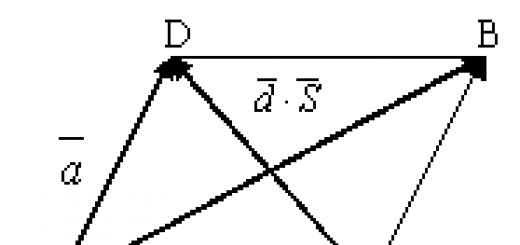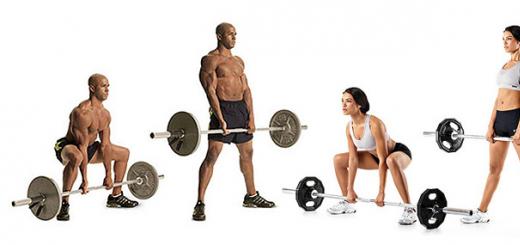Heating large, large-scale premises often requires the use of heavy artillery. In mind there is a gas heat gun. Despite their somewhat "military" name, such guns are designed exclusively for use in peaceful and creative purposes. Their main function is technological drying and heating.
The purpose of this "weapon" is drying and heating
The use of modern heat guns
Most often, a heat gun is used in construction warehouses, sites, greenhouses, utility rooms and other places where other household heaters become simply helpless. Such a technique is great solution when it is necessary to keep heat in a room that is not heated on a permanent basis. The device can act as a completely independent or additional heating.
The discussed equipment is most popular in modern industrial warehouses. During the loading or unloading of any products through the open door, cold air constantly rushes into the room. It is enough to remember the dimensions of any warehouse door in order to fully understand the complexity of the task. The gas heat gun is able to stably maintain the set temperature for a long time even in such difficult conditions.

It is also problematic to do without such guns when performing various technological processes. The point is not at all in maintaining a comfortable temperature, in the technologies of the processes themselves. For example, the installation of a stretch ceiling is only possible using a powerful thermal equipment, which creates the desired temperature so that the material to be mounted acquires the necessary properties. A gas heat gun is often used to speed up the drying of various paintwork materials or just to dry the room.
The design of heat guns
In general, heat guns are powerful and fast climate equipment. Such "weapons" can easily cope with the heating of the largest area. The technique helps to install enough in any room comfortable temperature already in a matter of minutes. After the start of work, the thermal heating system immediately starts supplying warm air to the room. This is what is main feature, which determines the popularity of the application.
It is easy to understand that the features of the gun are the result of a specific design. Like an ordinary heater, the equipment in question consists of a fan, a housing and a heating element.
Only here the fan in such a mechanism is much more powerful than a conventional household one. This factor is the main component of success. Without a powerful fan, there would be no such effective heating in the shortest possible time. It is the fan that drives the air through the heating elements, releasing warm streams at the exit.

The body of the heat gun also has some features, which is not made of plastic, which is familiar to everyone in home heaters. The body is made of metal. This technological solution is due to the highest temperature inside the apparatus. After all, the plastic case would simply melt in such conditions. In addition, metal protection is necessary when using guns at industrial facilities and construction sites (where they are most in demand).
Some models are complemented by specialized control systems, or a thermostat. All this is included directly in the design of the guns, or it works offline. The presence of such a system tends to drive up the price, but serves the purpose of convenience and high level operational safety. With the help of such systems, the air temperature in the room is controlled, as well as the temperature of the gun itself. This is convenient when the owner intends to leave the heater unattended for a long time.
Gas heat guns
Gas guns are less mobile, but more economical. Buying such a device is not so expensive. It will solve all problems with constant heating. Often the gun is used even in private garages, country houses, or in other large-scale premises. It's worth saying that gas heater does a great job with all the tasks, while spending much less electrical energy. The power of the device sometimes reaches 140 kW.
Discussed heaters work exclusively on natural or liquefied gas. Despite this, it is also impossible to do without the cost of electrical energy. After all, it will be required for the operation of the fan - one of the most important nodes. In addition, electricity is also needed for all kinds of additional equipment like thermostats. Completely autonomous heat guns operating without electricity would have to have the most complex design, and therefore, prohibitive cost. Various attempts to "invent" such a mechanism, to assemble it with your own hands are highly discouraged. A "home-made heating system" of this kind would certainly be incredibly dangerous.

Gas-fired heat guns are the optimal ratio of design complexity and cost. The work uses natural gas supplied through highways, butane, or propane, which are sold exclusively in specialized cylinders. When using propane or butane, the presence of lines is not necessary at all.
Filling a gas gun with liquefied gas is also possible at all kinds of gas stations that are adapted for refueling cars. Even renting a heater most often includes a specialized hose that connects the heating equipment to the cylinder. Actually, the presence of a gas cylinder or the attachment of the entire device to a stationary source makes the type of equipment under discussion much less mobile.
Completely regardless of what kind of gas the thermal tool operates on, one should not forget that the pressure in the cylinder or line must meet all the requirements of the heater model. It is known that the simplest of them, whose power does not exceed 10 kW, requires a pressure of more than 0.5 bar. Of course, the more powerful the apparatus, the more pressure it requires. This factor must be considered before buying a mechanism. Otherwise, the technique simply will not function normally. And the repair of gas heat guns is not a cheap pleasure.
Varieties of gas heat guns
Today there are two types of gas gun - indirect and direct heating. They operate on the same fuel, but at the same time they have different conditions and the principle of operation. The differences are in the way the incoming air flows are heated.


To increase the level of operational safety, many modern gun-heaters of indirect or direct heating provide protection for the body from overheating and flame control. It is not recommended to save on such equipment. After all, overheating of the case or an extinct flame can lead to a real disaster.
As you can see, the heating systems under discussion deservedly enjoy such popularity today. After all, this is one of the few ways to maintain a warm temperature in large rooms.
Having built a house, a person, first of all, what does he start to think about?
Absolutely right! You correctly assumed that every person always dreams of always being cozy and comfortable in his home.
Such an idyll is achieved only thanks to the heat! Therefore, every homeowner, first of all, always tries to install the optimal heating system for his home.
But here's the problem! Sharp frosts hit, and the heating system does not heat the room quickly enough to the required temperature. What then to do in this case? There is only one alternative: to go and buy a multifunctional unit called gas.
But not everyone knows what a gas heat gun is. In this article, we will try to tell in detail about this type of thermal units, as well as about in which areas of life the use of gas heat guns will be effective.
What is
A unit that generates warm air flow based on gas combustion is called a gas heat gun.
The design of the heat gun consists of the following important elements:
It is also worth noting that all these components are in a reliable metal case. This material for the housing was chosen based on the fact that a lot of heat is generated during the operation of the unit, in other words, the housing heats up quite strongly.
How does it work
To understand how a gas heat gun functions, you need to pay attention to the following important points:

What gas is used

 For the operation of a heat gun, as a rule, propane or butane gas is used, which is located in special cylinders.
For the operation of a heat gun, as a rule, propane or butane gas is used, which is located in special cylinders.
This, in turn, allows the use of a gas heat gun in any place, since the unit in this form will become a fairly mobile device.
It is also worth noting that the heat gun can be successfully connected to the main gas pipeline using a special hose. In this case, the unit becomes a full-fledged element of space heating, which may well replace the existing heating system.
Applications

 The most effective is the use of gas heat guns when performing the following production operations:
The most effective is the use of gas heat guns when performing the following production operations:
- Space heating. The use of a heat gun in this case allows you to quickly and efficiently heat a dwelling, various outbuildings, as well as industrial premises with a large area.
- Room ventilation. If you turn off the gas supply to the unit, the heat gun will become powerful fan, which will greatly contribute to the circulation of air in the room.
- Heating of surfaces and separate objects. The point orientation of the air flow of heat guns makes it possible, for example, to use them effectively when drying newly plastered surfaces.
The use of gas heat guns during installation is also considered indispensable. stretch ceilings. This is due, first of all, to the fact that the material for ceilings becomes more plastic when it is heated rapidly.
Manufacturers
The modern market of heating equipment has a fairly wide range of gas heat guns. And, despite the fact that the heat gun is quite specific equipment, nevertheless, many manufacturers present their own versions of this type. gas equipment.
To date, the most popular brands of heat guns are the following brands:

Equipment Rating
Among the above brands, the following several models of heat guns can be distinguished, which are confidently the leaders in sales of units of this type.

 Interskol TPG-15. The power of this gas gun model can vary from 3 to 15 kW.
Interskol TPG-15. The power of this gas gun model can vary from 3 to 15 kW.
The performance of the device is 300 m3 / h, while the fuel consumption rate is 0.73–1.3 kg / h.
In the heat gun of this model, it is possible to use propane gas, as well as butane.

 Neoclima IPG 15. As a rule, this model includes a gas reducer and a hose.
Neoclima IPG 15. As a rule, this model includes a gas reducer and a hose.
The fuel consumption of the heat gun is 1.4 kg/h.
At the same time, the power is 18 kW, and the productivity is 400 m3.

 Fubag. The most popular model of the gas heat gun of this brand is the Fubag Brise 15.
Fubag. The most popular model of the gas heat gun of this brand is the Fubag Brise 15.
The uniqueness of this model lies in the fact that with a capacity of 500 m3, fuel consumption is only 1–1.2 kg/h.
Unit power - 18 kW. The gas heat gun of this model is equipped with a high-quality protection system, as well as a flame control device.
Watch a video in which a specialist explains in detail the device and principle of operation of a gas heat gun using the example of choosing equipment for installing stretch ceilings:
Products of this class are used as permanent or temporary sources of heating - it all depends on the state of thermal insulation of the room. In practice, this is an ordinary fan heater, only with a high degree of efficiency and unique functionality. Heat guns on natural gas are used for high-quality and economical heating of greenhouses, greenhouses where flowers and vegetables are grown: during operation, they do not emit combustion products, unlike diesel fuel guns, and are also more economical than electrical counterparts.
The principle of operation of this class of units does not differ from other heat guns: the combustion chamber body is cooled by air blown by a fan. The warm air is then sent to heat the room. Gas heat guns differ structurally from electrical counterparts only in the presence of a burner instead of a heating element (TEN). The ignition of the gas occurs automatically with the help of a piezoelectric element.
This device can be used both for residential premises and for heating production facilities. For example, a 10 kW gas high-performance heat gun can heat a room in a new house with an area of 150-300 square meters. m. or a greenhouse up to 70 m 2. If the gun has a power 10 times greater, then it is capable of qualitatively heating a building with an area of about 3.3 thousand square meters. m or greenhouse - 740 m 2.
One cylinder of propane gas is enough for about 60 hours of operation without stopping, while it should be borne in mind that the fan heater turns off automatically when the set room temperature is reached, and then turns on if the temperature drops. For battery life connected to the product gas cylinder with liquefied natural gas, which can be easily replaced as you use it.
A compact heat gun capable of running on natural gas consumes only no more than 1 l / h to heat a living space.

Product classification
Gas-fired heat guns are divided into two main classes:
- products of direct heating of the air flow;
- indirect heating units.
In the first case, when the air flow is heated open fire, in which propane gas burns, combustion products enter the heated room, but the efficiency also reaches a maximum when using this design. The dimensions of such a device are quite compact, very low cost, but ventilation is necessary for a constant supply of fresh air. High fire hazard - no inspector will sign an act authorizing the use of this device for residential premises.
The second option is more preferable, because the combustion chamber in the unit closed type, all combustion products are discharged through a special pipe connected to the chimney. It is better to install such products outdoors, and blow warm air through a special system with a large-diameter hose made of non-combustible material.
Modern gas heat guns, which indirectly heat the air flow, run on propane, which burns without residue, and the removal of combustion products is no longer needed. Only their dimensions are larger than direct heating devices, respectively, and the price is higher.

Application Requirements
The operation of a gas-fired product, regardless of the design features, requires a constant flow of oxygen from the surrounding air for stable combustion. When the user selects a model, these features must be taken into account.
The pricing policy depends on the size, power and brand: the more difficult the working conditions, the larger the volume of heated areas, the more expensive the gas-fired heat gun will cost.
The room where the unit is planned to be located must have an excellent ventilation so that there is a constant supply of fresh air from outside. If there is no ventilation, then you need to choose a model with a thermostat that automatically turns off or turns on the gun, maintaining a sufficient level of oxygen. Equipment thermostat allows you to increase the efficiency of the product: when the optimum temperature is reached, it turns off the fan heater, turning it on only when the set temperature drops to a certain level. Products of this class are used in production, in warehouses, in the construction of buildings and heating of agricultural facilities, where people are not constantly present.

Heat gun gas with thermostat
Implement selection
Whole the lineup gas products has a very high efficiency, the fact of environmental cleanliness is also important - the burnt gas does not pollute the atmosphere, there are no extraneous odors, which is very important for farmers who grow flowers and vegetables.
How to choose a gas-powered fan heater from a wide range of models presented? To successfully make a choice, you need to learn more about the blue fuel used, the specific features of thermal units and their design.
- It should be borne in mind that similar heaters successfully operate from highways or from connected to a gas heat gun balloon. The efficiency of such a device becomes almost 100%.
- To purchase the right product with effective performance, you need to calculate in advance what power the unit you need. are being made room measurements: you need to know its volume. You should also check the quality of thermal insulation for leaks. The higher the performance of the heat gun, the faster it will heat the room to the desired temperature.
- Pay attention also to gas consumption to know how long the gun will work without the first shutdown.
All gas fan heaters have a similar working scheme, how it works, we have already discussed in detail a little earlier. It is necessary to note the fact that many do not need to connect to the network, because piezo element can ignite gas without electricity.
TPG-10 kW for 7 thousand rubles is considered by experts to be the best option for those places where there is no electricity connection nearby:
- runs on propane and butane;
- productivity - 300 m 3 / h;
- temperature up to + 90 C°;
- gas consumption max - 0.76 kg/h;
- weight - 5.5 kg.
This gas heat gun can be used from a gas main or with a connected cylinder, in places where there is a mains connection and without electricity. The Sturm GH91101 10 kW product has similar advantages; at a flow rate of 0.75 kg / h, the productivity is up to 330 m 3 / h, and the cost is only 5590 rubles.
Experts strongly advise users to repair gas heat guns only in special centers where there are masters in gas equipment, in order to avoid causing irreparable damage during self-maintenance.

Popular Models
There are many models of gas guns on the modern Russian market: Master, Ballu and many others, but we will consider only the most popular ones.
compact gun with a power of 10 kW, its speed is up to 300 cubic meters / h, and the consumption is more than modest - 0.75 kg / h. The connection is single-phase, the mass of the installation is only 4 kg, it uses liquefied propane, it costs from 4.7 thousand rubles.

This model has a capacity of 1450m 3 /h. Her power with small dimensions, it is impressive - 5300 W, and gas consumption - 3780 g / h. Therefore, its price is much higher - 10 thousand rubles. It is used for heating large shopping centers, supermarkets and industrial premises: repair shops, factory and factory shops.

Ballu BHG-20S
This is a representative of the middle class in the price category, can work on propane and butane, heating rate - 500 cu. m / h, gas consumption - 1.2 kg / h, power - 18 kW, weight - 4.9 kg, and the price is from 5 thousand rubles.
All of the above models use a piezo element to ignite the gas and are among the 10 most purchased models. Master is a US brand, but the country of origin today is Italy, and Ballu is a domestic development. For clarity, I advise you to watch a video about the functionality of Ballu:
Connection and operation
Before turning on the device, you need to read the instructions, where all the nuances of connection and use are described very intelligibly. Particular attention should be paid to situations where device cannot be turned on:
- with an increased content of dust in the air mass of the room;
- if there are vapors of explosive substances;
- the outlet is blocked by something.
Operating rules and safety measures may vary from manufacturer to manufacturer. various models- study the attached documentation before starting work.
Gas heat guns are very economical compact products, characterized by high volume heating speed and efficiency, therefore they are considered by gas equipment specialists to be an ideal option for heating various areas of large volume. I would like to note that Russian heat guns according to technical specifications they are not inferior to foreign brands, and their design is almost identical, so there is no point in overpaying.
Air heating is good because it does not require installation. One of the most popular options for utility and industrial premises is a gas heat gun. This device quickly warms up the air, however, it cools down just as quickly when the gun is turned off.
Device
A cannon, this heating device is not named by chance: it is a cylinder on a support, more massive models have wheels for easier movement. Compact models are equipped with a special carrying handle. During operation, the case heats up to solid temperatures, so you should not touch it.
The device of gas guns of direct heating
A fan is located in a cylindrical housing, behind it (closer to the "exit") a burner. Air is sucked in from the back of the case, passes through the fan, blowing the burner. Gas is supplied to the burner, which is ignited by ignition. The gas mixes with the air flow, which contributes to its more complete combustion.

gas heat gun good quality designed so that even at the highest power the flame does not go beyond the body. The outlet must be only a stream of hot air. As you can see, not too complicated device and a simple principle of operation. The design is complemented by filters - air and fuel, various sensors and safety devices.
Indirect gas guns
The main disadvantage of the above design is that the combustion products remain in the room. Of course, this negatively affects the well-being and, as a result, health in general. But this option has a very high efficiency - 95-98%. Therefore, these models are chosen in production or for temporary use.
There are gas guns without exhaust. Rather, the exhaust is removed from the room through a pipe. The device of such models is more complex. The combustion chamber is the same cylinder, only it is airtight in relation to the room. In the upper part it has an outlet pipe through which combustion products are removed. Heating occurs due to the fact that the air driven by the fan blows over the combustion chamber, taking heat away from the walls. Therefore, these models are called - heat guns of indirect heating. First, the heat exchanger heats up, and from it the air.

To make the heat extraction more complete, the gas from the combustion chamber moves through the labyrinth. Thus, the efficiency increases, but this figure still does not rise above 80-85%. But such installations do not harm health, they can be used on a long-term basis.
At the moment, the range of indirectly heated gas guns is very scarce, and prices are high. First of all, these devices are focused on large production and storage facilities.

Gas gun of indirect heating Ballu JUMBO 200 T LPG. Maximum power - 220.9 kW, price - 512,000 rubles
Advantages and disadvantages
We remind you once again: a gas heat gun is not intended for use as permanent heating. It is great for quickly warming up a cold cottage, garage, etc. It showed itself well when heating buildings under construction. It can be used to accelerate the drying of plasters and other mixtures (where the technology allows it). But you should not use the unit for constant heating of a residential building.

Now the cons:
- Burns out oxygen, so well-functioning ventilation is essential.
- It is problematic to officially fill the cylinder (it is prohibited at gas stations);
- The expense is big.
- If the cylinder is from frost, it burns badly.
- Some models are very noisy.
- Electricity is required (for the fan to work).
- The temperature in front of the nozzle of a working gun is very high.
- With half the gas in the cylinder, problems can begin: it often goes out. But this problem is typical for small-capacity cylinders. When using 50 liters everything is fine.

As you can see, it's far from ideal. But for a quick withdrawal of premises from sub-zero to positive temperatures, it’s very good. For example, having arrived at a dacha that is heated by a stove, do not freeze until it warms up, but turn on the gas heat gun and after 15-20 minutes you can undress. An alternative may be, perhaps. It is for giving, it is probably better, but you have to think about the garage and other technical premises.
Power selection
In order to roughly estimate the required power of heating devices, they are calculated by area. For a detached building middle lane, requires 1 kW of heat per 10 square meters area. The gas heat gun is not designed for permanent heating. Usually they take it to quickly warm up a technical room, cottage, garage, etc. To maintain the temperature, other devices are more often used. For this reason, the traditional calculation of power by area or volume is not suitable.
The formula for calculating the required power does not change:

- V is the volume of the room (multiply the height, width and length):
- dT is the temperature difference that needs to be provided (calculate the difference between the “starting temperature”, from which you will start heating the air, to the one you want to have in the room);
- Kt - coefficient of thermal conductivity of walls, floor and ceiling. At good insulation from 1 to 2; with poor thermal insulation from 3 to 4; with excellent insulation from 0.6 to 1.
- 860 - kilocalories per 1 kW of heat.
It's easy to calculate. Let's take an example. A gas heat gun will heat a garage with dimensions of 5 * 3.5 m, with a ceiling height of 3 m. The walls are one and a half bricks, only metal gates are insulated. It is planned to increase the temperature from -10°C to +20°C. We substitute the initial data into the formula, we get:

In total, we got that this room can be heated by a heat gun of 4.6 kW. But the heating will last at least an hour - the formula is built like that. If you want to reduce the time, the power must be increased proportionally. If the time is halved (in 30 minutes), we multiply the power by two, in order to warm up in a quarter of an hour (15 minutes), we need to multiply the found power by 4:
- 9.2 kW will be heated in 30 minutes;
- in 15 minutes - 18.4 kW.
The above calculation is approximate, but it allows you to estimate the required parameters. For those who do not like to count, there are tables in which everything has already been calculated. But they are given "on average" without taking into account the features of your buildings. The necessary parameters will have to be taken into account by ourselves, choosing from the proposed “fork” of capacities.
Criterias of choice
Power is far from the only parameter that determines the choice. The gas heat gun still has a sufficient number of characteristics that are worth paying attention to.

Protective functions
Open flames and gas are a dangerous combination. In the case of a gas heat gun, the possibility of carbon monoxide poisoning is also added. So additional security measures are not superfluous at all. Here are the protective mechanisms that this equipment can have:
- Protection of the electric motor against an overheat. Fan motor temperature is monitored. When critical values are reached, the gas is shut off. Restarting is possible only after the engine has cooled down.
- Flame control. If there is no flame on the burner, the gas supply valve closes.
- Protection against gas leaks. There is an atmospheric air analyzer. If the CO content is exceeded or the amount of oxygen is insufficient, the equipment is switched off.
- Rollover control. When the position is changed, the gas supply is shut off. So even if the heat gun falls, a fire is unlikely.

The only thing that can raise doubts is air control. Since the sensor is built-in, the state in the immediate vicinity of the device is analyzed, which can distort real data. Therefore, it is better to have a separate detector. Detectors (sensors) are inexpensive and can be programmed.

Operating characteristics
Power is far from the only parameter that characterizes the operation of gas heat guns. There are a few more that are simply necessary to understand how efficiently the unit will work.

As you can see, there are quite a few options. Not all are obvious, some can be skipped, but in general, pay attention to them.
Ease of use
For all that, outwardly one thermal gas gun practically no different from the other, it is convenient to use some, others are not. You can track it according to the following criteria.

Once again, we draw your attention to the fact that the gas heat gun is designed for rooms in which people are not constantly. With sufficient power, it will very quickly warm up the air even in a frozen room. But after turning it off, everything cools down just as quickly: only the air has warmed up, and not the walls and other enclosing structures. Nevertheless, as a means of rapid heating, it is very effective (although it consumes a lot of fuel).
Manufacturers
The most difficult thing when buying is not choosing capacities or characteristics. This, of course, is important, but the quality of the equipment is more important. And it often depends on the manufacturer. Gas guns are no exception. Few would agree to spend too much money on this equipment - the option is temporary. Usually they choose according to the price / quality criterion. The “half-Chinese” fit into this category. These are those whose management is located in Europe-America, and production in China. Russian guns on gas are approximately in the same category. Here is a list of popular brands:

It cannot be said that all models of the manufacturers listed above are successful. There are very good ones, and there are quite “so-so”.
Popular models of gas guns
When choosing a gas gun for both space heating and installation of stretch ceilings, you should be guided by the reviews of real owners. Consider the most popular models of different capacities.
RESANTA TGP-10000 (10 kW)

Gas gun RESANTA TGP-10000
Specifications
- Working principle: gas
- Heating area: 100 m²
- Maximum air exchange: 320 m³/h
- Management: mechanical
- Voltage: 220/230V
- Fuel consumption (l): 1.5 l/h
- Fuel consumption (kg): 0.73 kg/h
- Gas type: liquefied/natural
- Burner included: yes
- Ignition system: piezo ignition
- Power control: yes
- Ventilation without heating: yes
- Handle for moving: yes
- Dimensions: 52x34x22 cm
- Weight: 5.82 kg
- Further information: piezo ignition
Ballu BHG-10 (10 kW)

Specifications
- Working principle: gas
- Heating type: direct
- Max. heating power: 10 kW
- Management: mechanical
- Voltage: 220/230V
- Power Consumption: 32W
- Fuel consumption (kg): 0.8 kg/h
- Gas type: liquefied
- Ignition system: piezo ignition
- Protective functions: shutdown in case of overheating
- Power control: yes
- Handle for moving: yes
- Dimensions: 19x29x44.5 cm
- Weight: 5.3 kg
Master BLP 17 M (16 kW)

Gas gun Master BLP 17 M
Specifications
- Working principle: gas
- Heating type: direct
- Max. heating power: 16 kW
- Maximum air exchange: 300 m³/h
- Management: mechanical
- Voltage: 220/230V
- Power consumption: 53 W
- Fuel consumption (kg): 1.16 kg/h
- Gas type: liquefied
- Burner included: yes
- Ignition system: piezo ignition
- Protective functions: shutdown in case of overheating
- Power control: yes
- Handle for moving: yes
- Dimensions: 47.1×29.3×18.8 cm
- Weight: 4.5 kg
Ballu BHG-20 (17 kW)

Specifications
- Working principle: gas
- Heating type: direct
- Max. heating power: 17 kW
- Maximum air exchange: 270 m³/h
- Management: mechanical
- Voltage: 220/230V
- Power Consumption: 40W
- Fuel consumption (kg): 1.45 kg/h
- Gas type: liquefied
- Ignition system: piezo ignition
- Protective functions: shutdown in case of overheating
- Power control: yes
- Handle for moving: yes
- Dimensions: 19x29x44.5 cm
- Weight: 5.4 kg
Owner's video review of using the Ballu BHG-20 to heat the garage.
RESANTA TGP-30000 (30 kW)

Specifications
- Working principle: gas
- Max. heating power: 30 kW
- Heating area: 300 m²
- Management: mechanical
- Voltage: 220/230V
- Fuel consumption (kg): 2.4 kg/h
- Gas type: liquefied/natural
- Burner included: yes
- Ignition system: piezo ignition
- Protective functions: shutdown in case of overheating
- Power control: yes
- Ventilation without heating: yes
- Switch with indicator light: yes
- Handle for moving: yes
- Dimensions: 62x31x25 cm
- Weight: 9.2 kg
Ballu BHG-40 (33 kW)

Specifications
- Working principle: gas
- Heating type: direct
- Max. heating power: 33 kW
- Maximum air exchange: 720 m³/h
- Management: mechanical
- Voltage: 220/230V
- Power consumption: 53 W
- Fuel consumption (kg): 2.7 kg/h
- Gas type: liquefied
- Ignition system: piezo ignition
- Protective functions: shutdown in case of overheating
- Power control: yes
- Handle for moving: no
- Dimensions: 22×33.5×59.5 cm
- Weight: 8.3 kg
Ballu BHG-60 (53 kW)

Gas ballu cannon BHG-60
Specifications
- Working principle: gas
- Heating type: direct
- Max. heating power: 53 kW
- Maximum air exchange: 1000 m³/h
- Management: mechanical
- Voltage: 220/230V
- Power Consumption: 105W
- Fuel consumption (kg): 4.4 kg/h
- Gas type: liquefied
- Ignition system: piezo ignition
- Protective functions: shutdown in case of overheating
- Power control: yes
- Handle for moving: yes
- Dimensions: 27×41.5×71 cm
- Weight: 11.7 kg
Ballu BHG-85 (75 kW)

Gas gun Ballu BHG-85
Specifications
- Working principle: gas
- Heating type: direct
- Max. heating power: 75 kW
- Maximum air exchange: 2000 m³/h
- Management: mechanical
- Voltage: 220/230V
- Power consumption: 220W
- Fuel consumption (kg): 6.2 kg/h
- Gas type: liquefied
- Ignition system: piezo ignition
- Protective functions: shutdown in case of overheating
- Power control: yes
- Handle for moving: yes
- Dimensions: 27×41.5×81 cm
- Weight: 14.1 kg
Cannons for stretch ceilings
Despite the fact that it is safer to use electric heat guns when installing stretch ceilings, they are more popular gas models direct heating. This is due to the fact that gas guns have higher power and efficiency.
As a rule, professional "ceilingmen" have guns of different power in their arsenal - for different areas of ceilings. If we are talking about rooms up to 20 m², then a heat gun with a power of about 15 kW is enough. For example, Master BLP 17 M (16 kW) and Ballu BHG-20 (17 kW) are suitable. In small spaces it is more convenient to work with compact guns. As for safety, many experts recommend using composite cylinders.
If a more versatile option is required, then a direct heating gas gun with a power of 30-50 kW will be optimal. For example, RESANTA TGP-30000 (30 kW) or Master BLP 33 M (33 kW).
Heat guns are great for heating non-residential buildings. However, often such premises do not have power supply. In such situations, an autonomous heat gun can help, able to function without being connected to an electrical network.
Types of aggregates
An autonomous heat gun without electricity is most often represented by liquid fuel devices. They are able to work for various types liquid fuel: diesel fuel, kerosene or waste oil.
It should be noted that autonomous heat guns without electricity, operating on liquid fuel, can have the principle of direct or indirect heating. The former throw the products of fuel combustion directly into the heated room. Therefore, the latter must have an effective ventilation system.
Autonomous heat guns of indirect heating have a more advanced design, in which there is a discharge pipe for exhaust gases. As a result, such devices are quite suitable for rooms with people.
Benefits of independent type heaters
It should be noted that liquid fuel devices have safety systems, including:
Overheating protection;
A system that controls the flame of the burner, which allows the gun to turn off automatically when the flame goes out.
Autonomous heat guns without electricity also include gas heat guns. The devices capable of operating on bottled gas are distinguished by the greatest autonomy. After all, they can be moved indoors or transferred to another building. Such devices also have a burner, which, unlike liquid fuel devices, runs on gas.
As you can see, autonomous type heat guns are perfect for rooms without power supply. They are safe, effective and quite economical.











